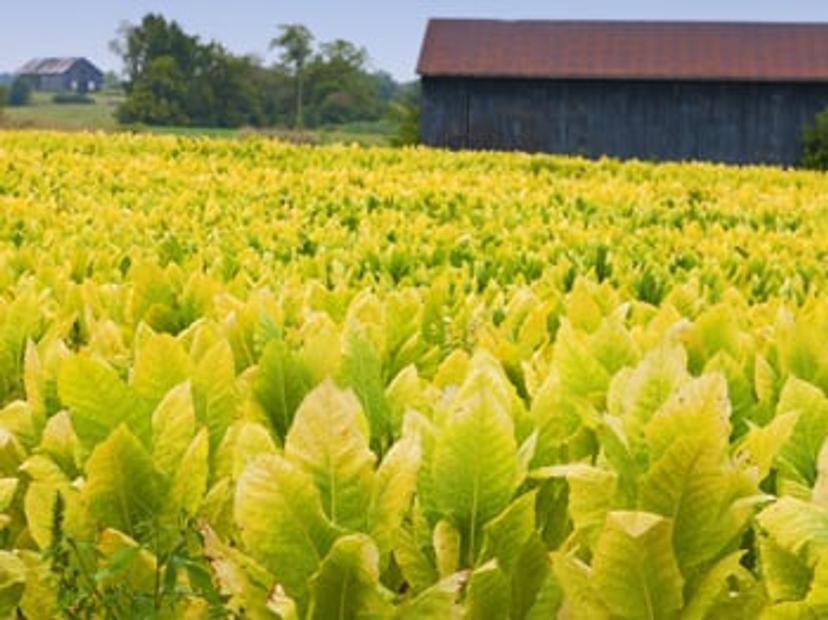Meet the scientist using nicotine-based plants to advance science
Plant scientist, Dr. Arpita Yadav, explains how she is breaking down boundaries by using nicotine producing plants to help her gain a better understanding of plant structure and cellulose synthesis, and reveals how her work could help combat global warming and advance crop growth
19 Oct 2022

In this exclusive SelectScience® interview, we speak with Dr. Arpita Yadav, Postdoctoral Research Associate at the University of Massachusetts Amherst, to learn how she is using her PhD and postdoctoral research to advance plant cell biology by using nicotine producing plants to answer vital questions relating to plant structure and morphology. Yadav discusses how her PhD project has the potential to protect crops from global warming and UV light and explains how her work may have significant implications on the livelihoods of farmers and crop growth. She also reveals the technology behind her research success and shares her goal to advance the field of plant science to help future generations.
Shining the spotlight on plants
Plant science has the power to enable us to build more sustainable agriculture, protect the environment, and to better understand conservation, climate change, food, nutrition, fuel, medicines, and much more.
I’m interested in understanding how plants work at a cellular level.
Dr. Arpita Yadav Postdoctoral Research Associate, University of Massachusetts
Dr. Arpita Yadav, Postdoctoral Research Associate at the University of Massachusetts, is working hard to push the boundaries of plant science by conducting multiple scientific experiments to help us elucidate the relationship between cellulose microfibrils and growth anisotropy. Cellulose is a major component of plant cell walls and is a linear chain polysaccharide, which is composed of many glucose subunits, that serve to provide the plant cell wall with strength and structural stability. “To help me better understand this relationship, I am using tobacco BY-2 cells to function as my research model. I want to understand how the cell actually shapes itself, and how cellulose synthesis can contribute toward this. I'm using several inhibitor molecules, such as propyzamide, and other chemicals, to inhibit the microtubules, so that I can explore and examine the structure of the plant cell wall,” explains Yadav. This research will ultimately allow Yadav and her team to discover how knocking out the microtubules from the cell wall can affect the overall structure and composition of the cell.
The advantage of using cells from nicotine producing plants
To advance her research, Yadav is also using the BY-2 cells to explore enzymes that specifically synthesize cellulose microfibrils, called cellulose synthases (CESA) – which are a family of glycosyltransferases. The BY-2 cells also go by the name of ‘Tobacco Bright Yellow-2 Suspension Cells’. These cells are a specialized cell line from nicotine producing plants, which are frequently used within many research projects to help researchers investigate plant cell morphology and physiology, since they are easy to culture, and grow remarkedly quickly.

Before beginning this investigation, Yadav focused her time on her PhD project, which centered on UV signaling in plants. During her PhD, Yadav characterized a protein called BBX31 – a protein which belongs to the BBX transcription factor family. After years of experimentation, Yadav found that this particular protein gave tolerance to a plant called Arabidopsis thaliana, when subjected to high doses of UV light. “My PhD and postdoc research are quite different, but overall, I’m interested in understanding how plants work at a cellular level. Interestingly, during my PhD, I found that under UV light, the overexpression transgenic line that I had created for the BBX31 protein was surviving, while the wild type had died – so I wanted to understand why it had such a high tolerance to UV.”
These findings could have significant implications for the future of global warming and the livelihood of farmers, “as we know, we are dealing with a rise in global warming, and an increase in temperature and ozone depletion. This is leading to high UV radiation coming to the earth’s surface, which will definitely affect crop productivity and plant health.” Yadav continues, “in the future, this could be translated to crop species, so that we can produce crops that are tolerant to high UV doses. Alternatively, because high UV is also accompanied by high temperature, one could also create cross-tolerant species, where the crop or the plant is tolerant to high UV and high-temperature stress,” explains Yadav.
I use the NanoDrop instrument on a regular basis to measure DNA concentrations.
Dr. Arpita Yadav Postdoctoral Research Associate, University of Massachusetts
Yadav’s current research relies on tobacco plant BY-2 cell lines to function as her research model. “Tobacco BY-2 cells were initially developed for commercial purposes – for the production of nicotine and other metabolites in Japan. Later, around the time of the 1960s, scientists began to realize that these cells could serve as a useful tool for the study of cell biology,” shares Yadav. The tobacco BY-2 cell originally derived from tobacco, also known as Nicotiana tabacum (N. tabacum), is the herbaceous plant that continues to be widely grown commercially for tobacco production. The BY-2 cell line presents brightly colored yellow leaves, which is helpful for Yadav, since they make for ideal and powerful imaging models.
“These cells have become a popular model in plant science because of their high homogeneity, fast growth rate, and they also readily produce protoplasts. These cells also grow as elongated filaments, which are not circular, like other tobacco varieties. Therefore, we have decided to sequence the genome of these BY-2 cell lines, so that we can try to understand what kind of genes might be involved in making these cells grow as elongated filaments,” explains Yadav. There is no doubt as to why researchers choose to use these cells to explore plants at a deeper and more intricate level. These potent cells will continue to be used extensively throughout science, particularly to study cell division, cytoskeleton studies, plant hormones, and more.
The technology helping plant science flourish
The one standout feature which I think every scientist who works with the NanoDrop knows is that you only need a very small volume of sample to measure the DNA
Dr. Arpita Yadav Postdoctoral Research Associate, University of Massachusetts
To support Yadav and her team meet their unique research goals, Yadav decided to use the Thermo Scientific™ NanoDrop™ Spectrophotometer to progress both her PhD and postdoctoral research. “The NanoDrop has been very helpful during both my PhD and postdoctoral research projects for the quantification of DNA and RNA. This instrument has been particularly helpful, as I have conducted a lot of molecular work during my studies, which have included cloning, qPCRs, and chromatin immunoprecipitation. I'm now doing CRISPR cloning for knocking out specific genes in the BY-2 cell line.” Yadav continues, “As a result, I use the NanoDrop instrument on a regular basis to measure DNA concentrations.” Regarding the key standout features and why this tool became so valuable to her work, Yadav states, “The one standout feature, which I think every scientist who works with the NanoDrop knows is that you only need a very small volume of sample to measure the DNA, around one microliter, and within as little as one minute, you can measure several samples in one go – which is commendable. Also, it gives you absorbance ratio values at different wavelengths, which help us to know the purity of the sample. This instrument is very impressive – plus it is small, not heavy, fast, and easy to operate,” shares Yadav.
Looking toward the future
Looking ahead, Yadav aims to continue her quest to answer the key research questions, how does cellulose synthesis operate in plants, and how does this relate to growth anisotropy? “My research will bring us one step closer to understanding plant structure, and the significance of it. This research will help other plant scientists understand the basic mechanisms of how a cell works, and also how cellulose synthesis mechanisms operate in plants. Once we know the basics, other scientists can then extrapolate on this, by finding out what impact this could have on the environment,” Yadav concludes. Undoubtedly, the research that Yadav and her team are conducting using nicotine producing plants has the potential to help many other plant scientists to advance their research, to enable us to better understand our environment and global warming, and help us protect our planet and our valuable resources for years to come.
